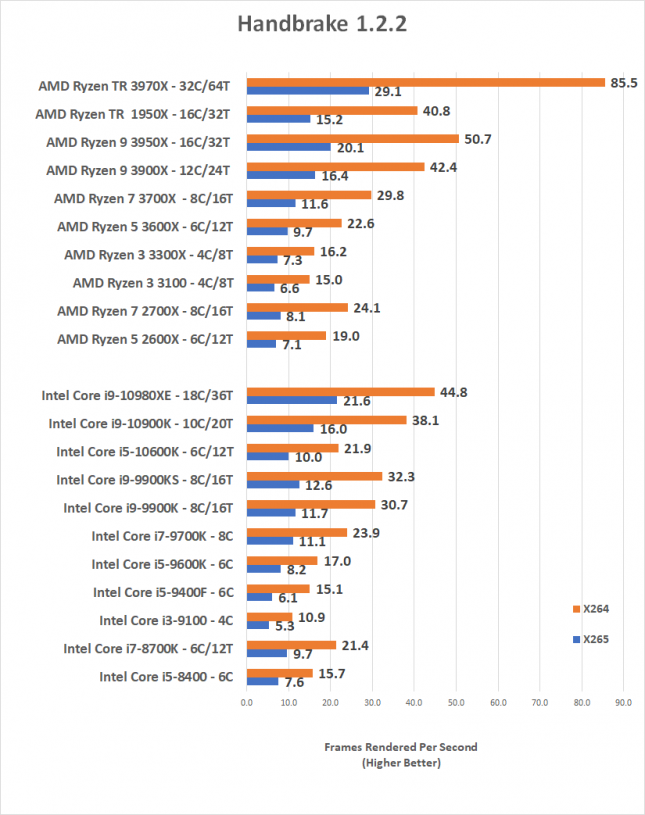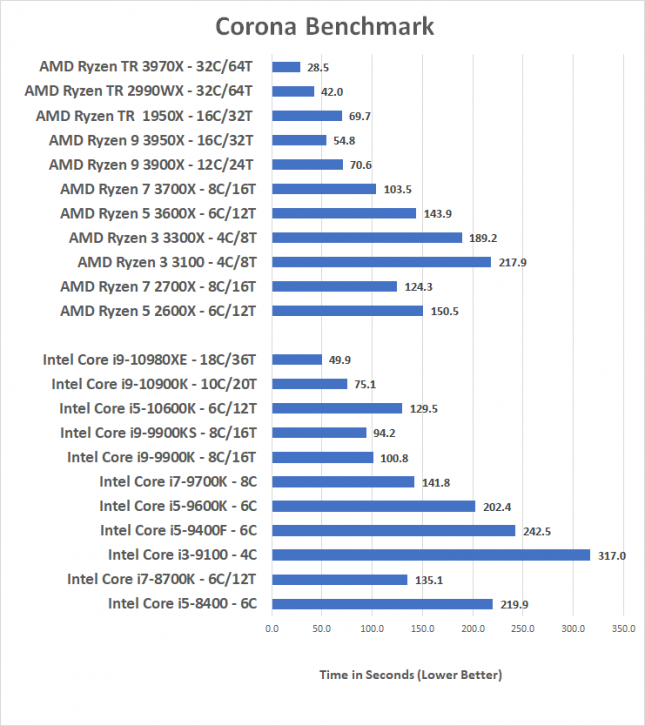Intel Core i9-10900K and Core i5-10600K CPU Review
HandBrake, Corona, POV-Ray, Geekbench
HandBrake v1.2.2 – link
HandBrake is an open-source, GPL-licensed, multiplatform, multithreaded video transcoder, available for MacOS X, Linux and Windows. It is popular today as it allows you to transcode multiple input video formats to h.264 output format and is highly multithreaded. We used Big Buck Bunny as our input file, which has become one of the world standards for video benchmarks.
For our benchmark scenario we used a standard 2D 4K (3840×2160) 60 FPS clip in the MP4 format and used Handbrake version 1.2.2
What about Intel Quick Sync Video performance? Intel processors that have integrated graphics will enable you to access the dedicated media processing capabilities of Intel Graphics Technology to quickly decode and encode without impacting overall system responsiveness. Handbrake supports QSV as well as NVIDIA NVENC, so we offloaded this workload from just the CPU to the GPU to take a look at performnce.
Using Intel QSV gets around 35-36 FPS on average on most desktop processors with Intel UGH Graphics 630. The one interesting thing that we noticed is that with the Intel Core i9-10900K is that the CPU completed the task before QSV. This is the first time that we have seen this happen, but obviously the system is way more responsive while the job is being done if QSV handles the task.
Corona Benchmark: link
Corona Renderer 1.3 allows you to test and compare the performance of your CPU using this free benchmark application, which is built upon Corona Renderer 1.3. Legit Reviews charted the time it took to complete the Corona Renderer benchmark.
POV-Ray 3.80 Beta: link
The Persistence of Vision Ray Tracer, or POV-Ray, is a ray tracing program which generates images from a text-based scene description, and is available for a variety of computer platforms. We used the recommend scene, benchmark.pov, for CPU benchmarking, as it uses many of POV-Ray’s internal features.
Geekbench 4.3.4 Pro: link
Geekbench is a cross-platform processor benchmark, with a scoring system that separates single-core and multi-core performance, and workloads that simulate real-world scenarios. These tests are complex, avoiding simple problems with straightforward memory-access patterns, and push the limits of your system.






